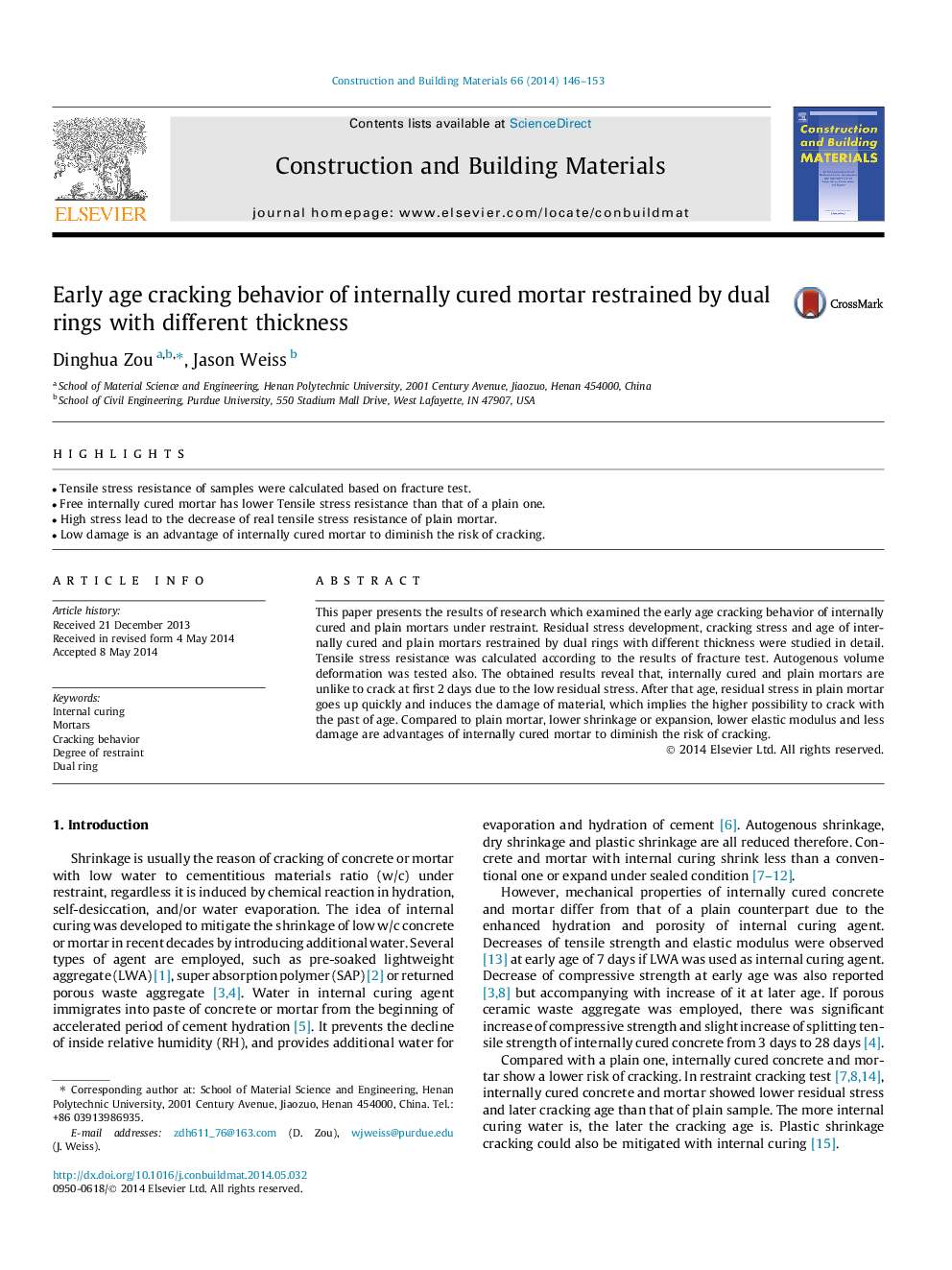| Article ID | Journal | Published Year | Pages | File Type |
|---|---|---|---|---|
| 6722462 | Construction and Building Materials | 2014 | 8 Pages |
Abstract
This paper presents the results of research which examined the early age cracking behavior of internally cured and plain mortars under restraint. Residual stress development, cracking stress and age of internally cured and plain mortars restrained by dual rings with different thickness were studied in detail. Tensile stress resistance was calculated according to the results of fracture test. Autogenous volume deformation was tested also. The obtained results reveal that, internally cured and plain mortars are unlike to crack at first 2Â days due to the low residual stress. After that age, residual stress in plain mortar goes up quickly and induces the damage of material, which implies the higher possibility to crack with the past of age. Compared to plain mortar, lower shrinkage or expansion, lower elastic modulus and less damage are advantages of internally cured mortar to diminish the risk of cracking.
Related Topics
Physical Sciences and Engineering
Engineering
Civil and Structural Engineering
Authors
Dinghua Zou, Jason Weiss,
